NWP based reanalyses developed in 4 different flavours
There are three different fully 3-dimensional reanalysis systems developed in UERRA and a fourth one which is analysing near surface parameters only but at higher resolution, 5 km, instead of about 11 for the three upper air reanalyses.
SMHI has run two 5-year reanalyses (2006-2010) with two model versions, both to provide some feeling for the uncertainty or differences due to model differences but then in order to chose the best version for the full 55 years of reanalyses. Some examples of the differences and standard deviation of differences are shown below:

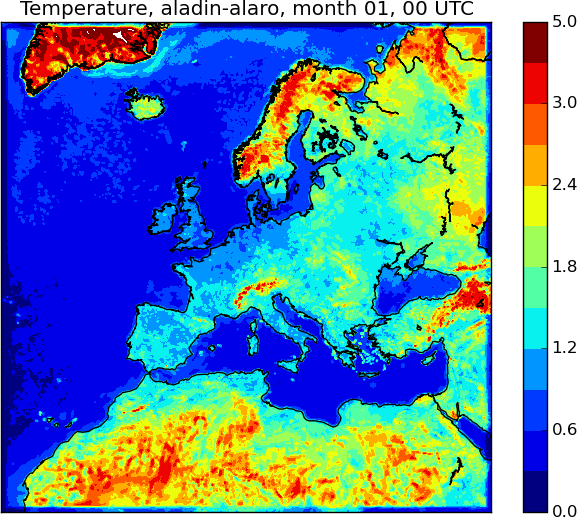
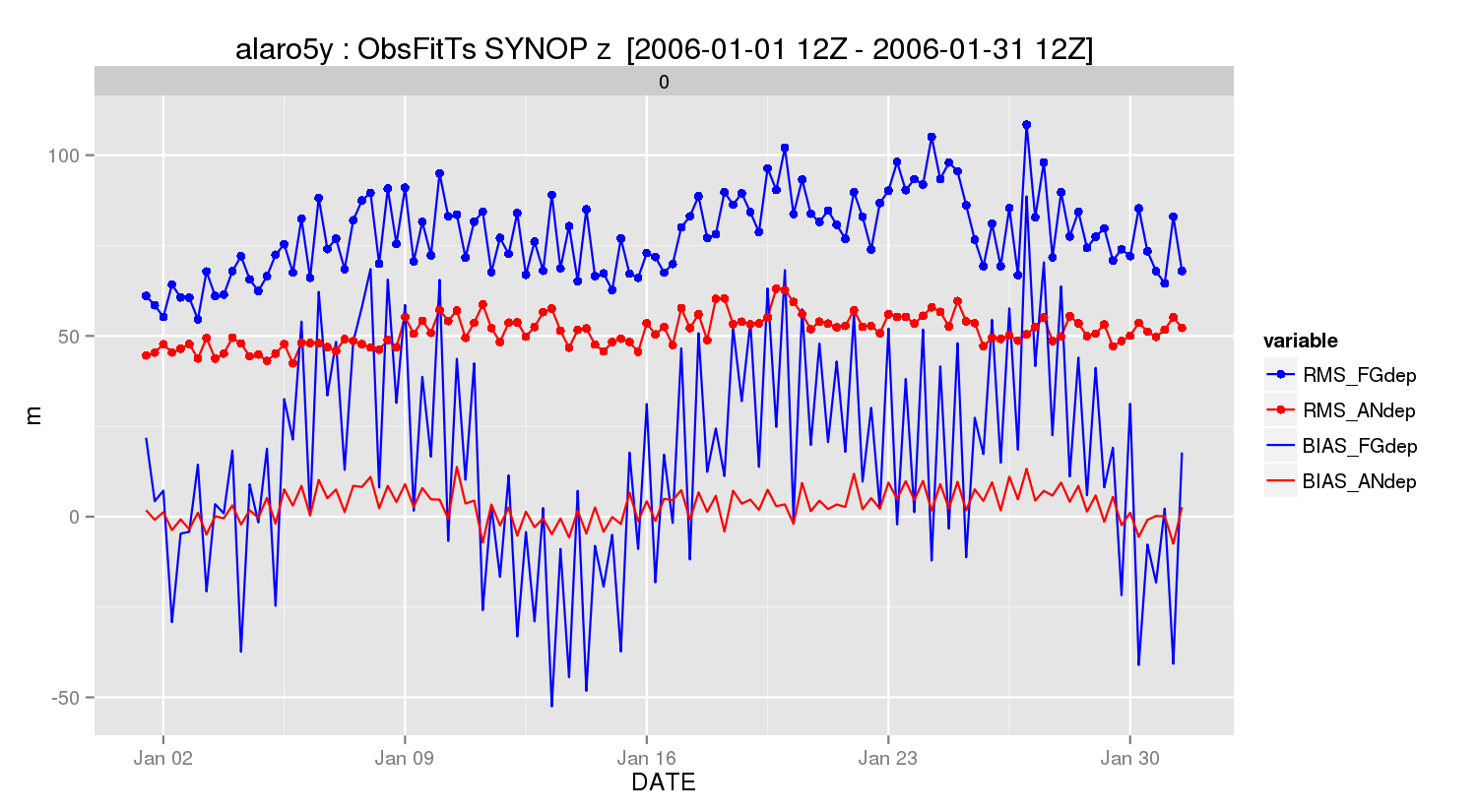
The use of observations and the fits to the short range forecasts (6 hours) used in the reanalyses and the reanalyses themselves have been monitored regularly through the 5 years. An example fro January 2006 is shown above.
The Met Office has developed an ensemble assimilation system with 20 members of 4D Variational Data assimilation (4D-Var DA) but at 24 kilometre resolution. This has been run for test periods for about a month and is soon ready for production. The ensembles provide some estimate of uncertainties through their spread and furthermore, the statistics will be fed in to the deterministic 12 km 4D-VAR to give a flow (or weather situation dependence). This whole system will be run for the satellite era, from 1978 for at least 25 years. The spread in the ensembles can be seen in an example below.
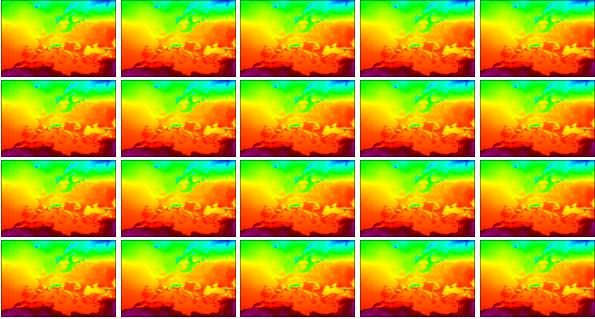
The University of Bonn has developed an ensemble assimilation with the COSMO model at 12 km horisontal resolution over the same Euro-Atlantic region as the others. Although an more advanced ensemble system is under development, the nudging based ensemble is starting to be run now (spring 2016) with 20 members. The demonstration of the method for reanalysis and ensemble spread based uncertainties will be limited to 5 years of assimilation.
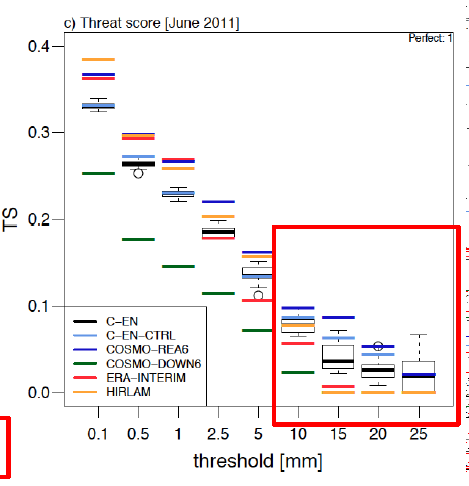
Météo-France has developed a near-surface parameter ensemble reanalysis system (for precipitation and temperature and humidity at 2 metres in the UERRA application). It is using results from the SMHI upper air reanalysis with the two model physics versions at 11 km resolution and then downscaling them with different methods and model versions. This will give a sort of ensemble with at least 6 members to be run for 5 years (2006-2010) at as high resolution as 5 km. A long, 55 years, run at 5 km will also be made, from and like the SMHI reanalysis at explained above.

Rather complex systems of scripts, jobs and scheduler instructions have been set up at all the participating centres. An example of the control in one reanalysis cycle for SMHI at ECMWF is shown below. All the applications of the analysis and model systems have been set up in unique domains, resolutions and parameter settings for this European-Atlantic UERRA area and they are different from any of their operational runs and settings.
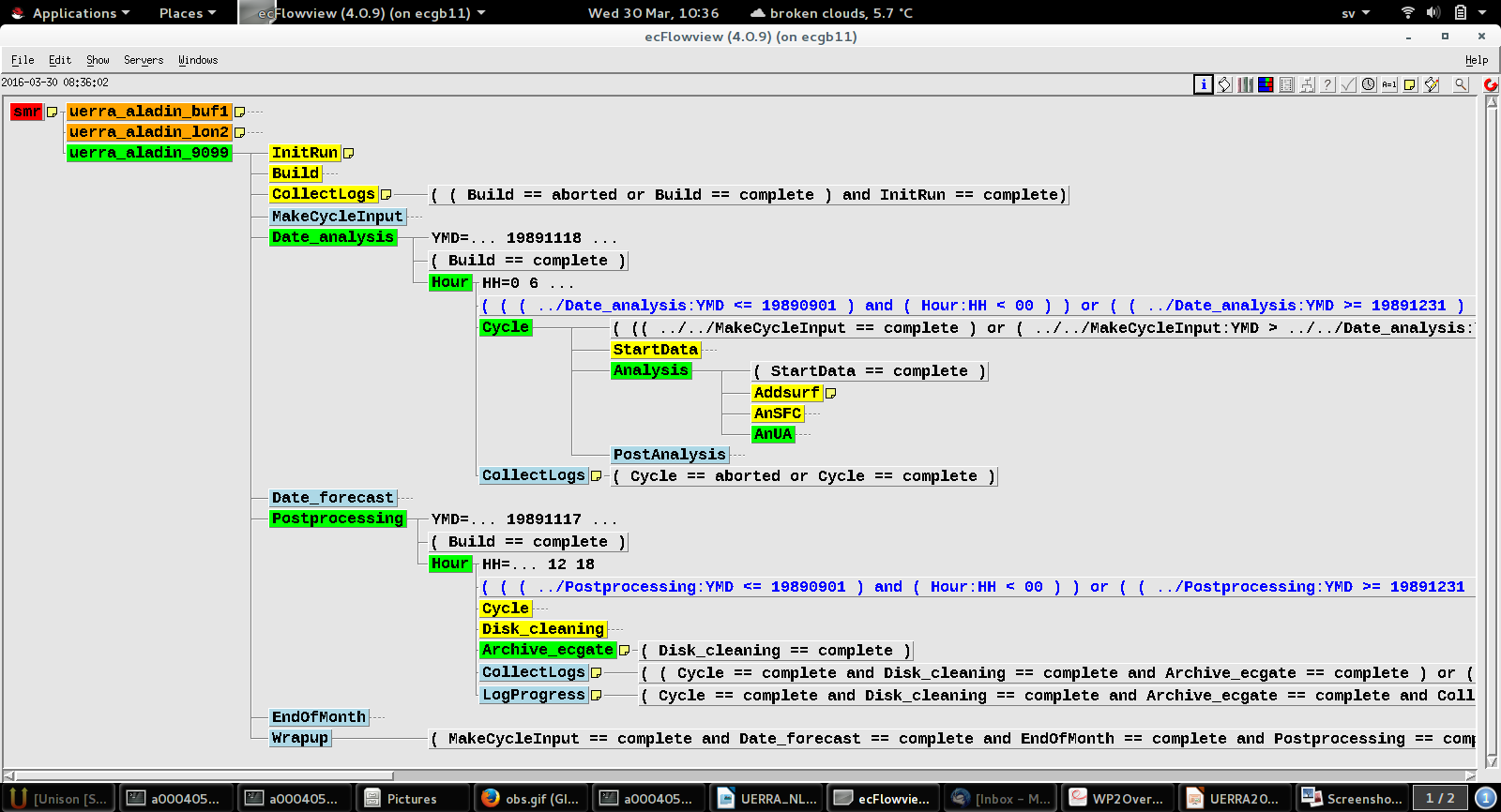
Another and 5th special reanalysis for 25 years of satellite cloudiness data has been developed at SMHI. This will mainly be based on the geostationary SEVIRI and MVERI instruments but also on cloud mask data from polar satellites and also using a model background from the HIRLAM data in the precursor EURO4M project. It will use the latest and best available EUMETSAT SAF products. The results of the cloudiness reanalysis will also be used in the evaluation part of UERRA.
